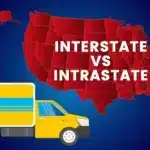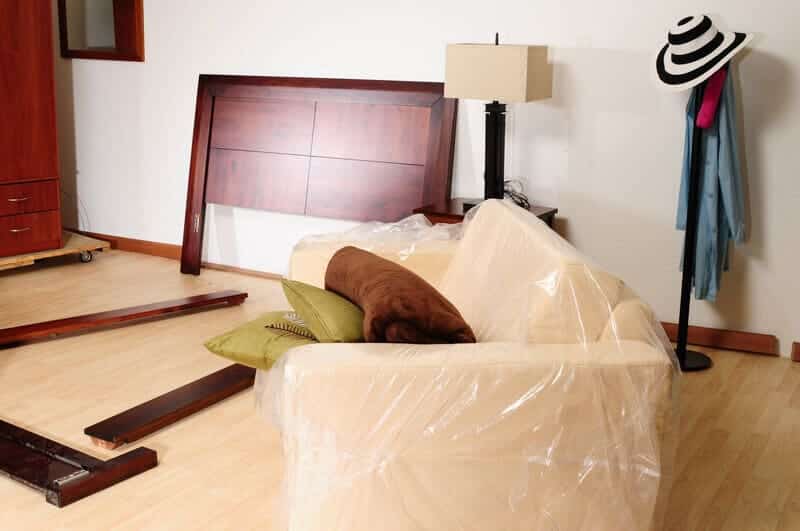15 Long Distance Moving Tips That You Should Know –Here you are, researching what could be the right way to move and what will help you get things moving in the right way without damaging them. This can be a difficult thing to get done on your own, which is why you are at the right blog at the right time.
Table of Contents
ToggleHaving the right kind of advice on your next move can be challenging, with numerous sources telling us what to do and what not to do, and many myths creating a gray area you don’t want to navigate. Here are 15 long-distance moving tips that you should know.

Why are They Important
Knowing what the benefits are of ways that can help you have an effortless move can help you understand right from wrong, save time, and effort. So here are a few reasons why you should know at least 15 long-distance moving tips
Prevent Costly Mistakes & Unexpected Fees
Knowing the right type of advice and tools can help you ensure an effortless and free of unnecessary hassle. Let the world be amazed at your mangng skills and watch them take notes from how smoothly you move from one place to another. By following practical tips, readers can budget more accurately and avoid unpleasant financial surprises.
Reduce Stress & Avoid Overwhelm
Knowledge is the answer to any and every kind of stress and anxiety. Relocating long distances is inherently stressful. A well-thought-out plan and a clear timeline reduce anxiety and give structure to what otherwise feels chaotic. Tips like checklist creation, advanced planning, and task breakdown make the process feel more manageable and empowering.
Improve Safety & Protect Belongings
Having the safe kind of mindset and always having the checklist ready for you to get it right gives the right sense of safety. Using expert packing strategies and opting for full-value protection (insurance) can safeguard your belongings and give you peace of mind.
Save Time and Energy
Long-distance moves take significant time—often weeks—if you’re doing it solo. Hiring professional movers or using efficient systems can save days (or more) of effort, reduce physical strain, and free you to focus on settling in.
Gain Better Control and Planning Clarity
Having control over your sense of movement and how the whole process is taking place gives you a sense of grandiosity and belongingness. Some moving methods, like driving your truck, offer more control but come with their challenges. Knowing the pros and cons of each approach—how much control, risk, and effort each entails—helps people choose what works best for their situation.
Maximize Value
Whether saving money by decluttering before moving or simplifying by selling or donating items, practical strategies can lighten your load and your budget. This not only reduces costs but also creates a fresher start in your new home.
What’s the Catch Behind Smooth Long Distance Moving Tips
These 15 ways can differentiate you from the general public. Continue reading to find out the best way to move long distance:-
Start Planning Early
The right preparation for the ultimate move starts at least a year ago. Understand all aspects of your move and carry out every little detail as intricately as you can.
Declutter Before You Pack
Take this as a fun way to know what all in your house, what can be kept, and what should be avoided at all costs, what can be kept. What belongs in rash and what is too pretty to be handled. Taking only the necessities can be easier for the heavy lifters as well.
Create a Moving Budget
Allocate a specially curated budget to every item being moved. Every category should have a list of the things moved and being shifted. Having a checklist throughout the process. Keep disposable cash towards any heat-of-the-moment requirements!
Research and Hire a Reputable Moving Company
Before booking a mover, gather 3–5 written, in‑home estimates, verify their USDOT registration and insurance through FMCSA, and review customer feedback on trusted platforms like BBB or Google. Avoid movers asking for large upfront deposits, and ensure they offer transparent pricing and clearly outlined service.
Understand Your Moving Options
Knowing what your options are, doing all the required research, and having the right kind of approach towards it all can help you get the maximum results. Knowing how to get the right things and moving options is one of the best 15 long-distance moving tips. Consider full-service movers, portable moving containers, or DIY truck rentals. Choose the option that best fits your budget and needs
Notify Important Parties of Your Move
When moving interstate, or any long distance, the right way to handle your move is to tell your people or the people who are not your people but still are affected by your presence in both cities, should be informed, i.e. post office, banks, and other officials who made you feel at home with your now or soon to be ex-home.
Transfer Utilities and Services
Schedule the disconnection of utilities at your current homeSett a specific time to emotionally and mechanically move your furniture and all things necessary. Arrange for utilities to be connected at your new residence before arrival.
Pack Strategically
Use quality packing materials to protect your belongings so that they are not damaged by the move’s hustle and bustle. Label boxes clearly and pack items by room for easier unpacking.
Prepare an Essentials Box
Pack a box with necessities like toiletries, clothes, and important documents. Remove all the essentials into one box and carry them with their label, if possible, with you during the move in your vehicle. Keep this box easily accessible during the move.
Take Inventory of Your Belongings
Keep a tally of all the things before moving and after reaching the place. Don’t let anything essential out of your reach during the move. Only trust those responsible for your stuff. Hiring the right people can help you have a smoother move. Photograph valuable items for insurance purposes.
Plan for Your Pets and Plants
Ensure your pets and plants move safely by preparing thoughtfully. For pets, maintain routine feeding and exercise, introduce carriers well in advance, and secure a cozy, familiar space to reduce stress while packing and loading. Keep important veterinary documents, microchip info, and update ID tags—especially for interstate moves. Arrange pet-friendly accommodations or professional pet transport when needed.
Prepare for the Journey
Craft your travel plan with comfort and safety in mind. Plot your driving route, schedule regular rest breaks, and book pet-friendly lodging in advance. Don’t forget to service your vehicle to reduce breakdown risk. Keep essential documents—such as IDs, insurance, and moving contracts—easily accessible throughout the trip.
Stay Organized on Moving Day
On moving day, stay composed and efficient by keeping everything orderly. Secure all important documents—moving contract, inventory list, contact info—in a binder or folder you can grab easily. Avoid last-minute delays and ensure that your most critical things stay under your control rather than getting packed unknowingly.
Unpack Methodically
Once you arrive, unpack with intention. Start by setting up the essentials—your bed, kitchen supplies, and bathroom necessities—to quickly restore some normalcy. Labelled boxes help you locate needed items fast. This approach lets you go back to factory settings more smoothly and avoid chaos at all costs.
Familiarize Yourself with Your New Community
Settling into a new locale goes beyond unpacking. Explore nearby amenities—grocery stores, hospitals, and parks. If you’ve moved to a new state, don’t delay registering your vehicle, updating your driver’s license, and adhering to any local pet ordinances or housing rules. Early compliance avoids fines and smooths your transition into the legal and cultural fabric of your new community. Let the new folk know that you have arrived by making a neighborly entrance.
Approaching Professionals
Knowing when to get to the professionals can make a great difference in your moving plan and stress. Singh Movers and Packers can help you make your moving dreams to become a reality as they are the best removalists in Sydney. Their determination to give you the best possible service. Call Singh Movers and Packers to take care of all your move-related needs.
Final Takeaway
Moving long distance can be a big thing and can often be one of the most difficult things. But with the help of all that we know after reading the blog, we should be able to handle a move like a pro. We should be given a pat on the back at the end of all that we survive during these difficult hours of moving.
Frequently Asked Questions
What counts as a long‑distance move?
Typically, a move is considered long‑distance when it exceeds about 100 miles (160 km) or sometimes 250 km. Practices vary by company, but if your relocation crosses provincial or state lines, that’s usually regarded as long‑distance.
What additional fees should I expect?
Extra charges might include stair carries, elevator use, long carry distance, packing materials, specialty item handling (like pianos), or last-minute changes. Always ask for a full fee breakdown.
Are they a broker or a carrier?
Brokers outsource your move to subcontractors, while carriers handle everything with their staff and equipment. Hybrid companies do both. Knowing this helps you understand who is handling your goods.
How far in advance should I book movers?
For long‑distance moves—especially in peak season—book at least 8–12 weeks in advance to secure your dates and possibly access discounts
Is it better to pack myself or hire professionals?
You can DIY pack, but for long moves, professional packing reduces the risk of damage. Experts use proper materials and techniques, especially for fragile or specialty items.




